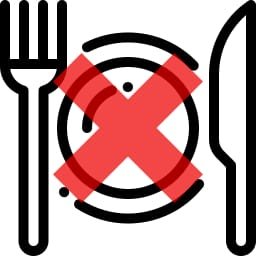How to Save for a House – The Right Way
Posted by Troy Elston, REALTOR on May 7, 2023
Saving for a house requires discipline, planning, and time. In this guide, we’ll show you how to save money for a house and make your dream of home ownership come true.
Step 1: Set a Realistic Down Payment Goal
Determine How Much You Need to Save for a House
The first step to saving for a house is to determine how much you actually need to save. You can easily do this by researching the cost of homes in the area you want to live. Consider things like the size of the house, the number of bedrooms, and the neighborhood.
Speak with a Lender
I recommend speaking to a loan officer first to determine how much you qualify for. Your lender will evaluate your income, assets and debts to present you with a financing product that meets your budgeting goals. Many types of home loans have different down payment requirements you should be aware of.

Tod Dianovich, Loan Officer at Guild Mortgage | 602.705.5915
If you’re looking for absolutely one of the best loan officers in the Phoenix Area, look no further than Tod Dianovich. Tod has a solid record in closing and funding home purchases ahead of schedule with no surprises. Tod’s company, Guild Mortgage offers the highest level of service and a large selection of mortgage products to help you buy that home.The ideal down payment for a house is at least 20% of the home price. Anything less than that, and you’ll have to pay for private mortgage insurance (PMI).
Many first-time home buyers will opt for the 3.5% down payment that FHA loans offer. Just remember that the less you put down on a home, the more your monthly payment will be.
Know the Real Estate Market
The local real estate market plays a critical role in determining how much you need to save for a down payment. If it’s a seller’s market, home prices will naturally be quite higher than usual. Since your down payment is often calculated as a percentage of the purchase price, it will be higher.
What if you’re in a buyer’s market? Well, that’s great news for you. Many sellers are often quite flexible with the listing price in a buyer’s market. The longer homes sit on the market, the better the chance your agent can negotiate a lower price for you.
You may also have an opportunity to ask the home seller to pay all or some of your closing costs.
See a complete list of Closing Costs Here
You should also keep in mind that there are additional closing costs required, such as loan costs, escrow fees, hoa fees, property taxes, and homeowner’s insurance. Once you have a rough estimate of what all these costs add up to, you can calculate how much you need to save each month to reach your goal.
Let’s say you want to buy a house in a neighborhood where the average price is $400,000. You need a minimum down payment of $20,000 saved and want to finance the rest.
You estimate that closing costs will be around $10,000, and property taxes and homeowner’s insurance will cost around $3,000 a year.
This means you will need to save at least $33,000. If you plan to buy a house in five years, you’ll need to save approximately $6,600 a year or $550 a month.
Step 2: Tighten Your Spending
Create a Budget
Once you know how much you need to save, the next step is to create a budget. A budget will help you determine how much money you can put towards your savings each month.
Start by listing all your monthly expenses, such as rent, utilities, groceries, and transportation. Then, subtract your expenses from your monthly income. The amount left over is what you can save towards your down payment.
Example: If for example, your monthly income is $6,000, and your expenses are as follows:

Rent
$1,500

Utilities
$200

Groceries
$400

Transportation
$200

Entertainment
$300

Miscellaneous
$150
Total expenses: $2,750
Amount left over: $3,250
In this example, you have $3,250 left over each month that you can put towards your down payment.
Make Sacrifices
To make your dream of owning a house a reality, you’ll have to make some sacrifices temporarily. Look for areas where you can cut back, and make a list of things you can live without for a while.
For example, you could:
- take a break from the gym
- save on going out to eat for special occasions
- trim your clothing budget
- buy generic products
- cancel that vacation
Cutting out on these and similar items could save you hundreds of dollars each month. Get creative and find more ways to trim your spending.
In addition to setting a savings goal and creating a budget, there are several other steps you can take to save for a house:
Reduce Your Existing Expenses
What happens if you’re short on cash after creating a budget? If you find that you don’t have enough money left over each month to save towards your down payment, you may need to reduce your expenses.
Consider negotiating bills, reducing subscriptions, or finding more affordable alternatives for things like groceries and transportation.
Look for ways to cut back on unnecessary expenses, such as eating out, buying expensive coffee, or paying for cable TV. You can also consider downsizing to a smaller apartment or finding a roommate to split the rent.


Let’s say you currently spend $300 a month on eating out and $100 a month on cable TV. By reducing your eating out expenses to $150 a month and canceling your cable TV subscription, you can save an additional $250 a month towards saving for a house down payment.
Step 3: Boost Your Income
In addition to cutting back on your expenses, you can boost your income to fast-track your savings. Look for ways to increase your income, such as taking on a part-time job, freelancing, or selling unwanted items. All extra income should go directly into your house savings fund.
Step 4: Save. Aggressively
Saving for a house is hard work and requires discipline. It may seem impossible to save a large amount of money, but remember that every dollar counts, and small contributions add up over time.
Explore Different Saving Options
There are several ways to save for a house beyond just putting money into a savings account. One popular option is a certificate of deposit (CD), which typically offers a higher interest rate than a regular savings account.
Another option is a money market account, which allows you to earn a higher interest rate while still having easy access to your funds.
Automate Your Savings
One of the best ways to ensure that you save enough money for a down payment is to automate your savings. Set up an automatic transfer from your checking account to a savings account each month. This way, you won’t have to worry about remembering to save money each month.

Ally Interest Checking accounts are tracked for transactions they can round up to the nearest dollar. When you accrue at least $5 in total round ups, Ally will automatically transfer it to your savings.
Step 5: Consider Other Sources of Income
If you’re having difficulty saving enough money for a down payment, you may consider other sources of funding. This could include taking on a part-time job, freelancing, or selling items you no longer need.
Retirement Savings Accounts
For example, you could borrow from your 401(k) or IRA. However, this is a risky move, and you should only consider it as a last resort.
Gifts From Family Members
Another option is to get a gift from a family member. However, there are rules and limitations when it comes to gift money. Speak to your lender or a financial advisor to learn more.
Down Payment Assistance Programs
If you’re looking to receive down payment assistance in Maricopa County, Arizona, there are a few steps you can take to help you get started. The first step is to research available down payment assistance programs in the area.
Some examples of programs in Maricopa County include the Home Plus program, which provides up to 5% of the loan amount for a down payment and closing costs, and the Pathway to Purchase program, which provides up to $20,000 in assistance for eligible home buyers.
Be sure to review the eligibility requirements for each program to determine which ones you may qualify for.
Once you’ve identified potential down payment assistance programs, you can reach out to a qualified lender to help guide you through the application process. The lender will work with you to determine which programs you may be eligible for, and assist you in completing the necessary paperwork to apply for assistance.
It’s important to keep in mind that the application process may take some time, so it’s best to start early and be prepared to provide all necessary documentation to support your application.

Let’s look at a hypothetical example to see how these tips and steps could work in practice.
Maria is a recent college graduate who wants to save for a house in the next five years. She sets a savings goal of $20,000 for her down payment and closing costs. Based on her current income and expenses, she determines that she can realistically save $300 per month towards this goal.
To help her reach her goal, Maria creates a budget that outlines all of her monthly expenses and identifies areas where she can reduce costs. She decides to negotiate her cable bill, switch to a more affordable cell phone plan, and starts meal planning to reduce her grocery expenses.
Maria also looks into different saving options and decides to open a certificate of deposit (CD) to earn a higher interest rate on her savings. She sets up an automatic transfer of $150 per month from her checking account to her CD account, as well as an automatic transfer of $150 per month from her checking account to her dedicated housing savings account.
In addition to her full-time job, Maria starts freelancing on the side to earn extra income. She also looks into down payment assistance programs offered by her state and learns that she may be eligible for a grant that could cover up to 5% of her down payment.
With these steps in place, Maria is able to consistently save for a house.
Unexpected expenses will pop up, so you’ll want to be flexible when it comes to your budget. If your car breaks down or your child gets sick, that’s a priority. Once you cover those immediate expenses, it’s back to saving for a house.
Saving for a house can seem impossible sometimes, but by taking these steps I discussed above and staying disciplined, you’ll meet your goal of saving for a house before you know it.
To be successful in saving for a house, always remember to:
- Set clear savings goals
- create a solid budget
- explore different saving options
- automate your savings
- reduce expenses
- look for additional sources of income
- consider alternative financing options
You Got this!
-
Is The Phoenix Housing Market Cooling Down?
The Phoenix housing market has been sizzling for years, with prices skyrocketing and buyers engaging in intense competition. However, recent developments hint at a potential
-
How to Snag the Best Mortgage Interest Rate
So you’re ready to buy your first home! You’ve been dreaming of this moment, and you’re probably ready to jump into the market and start
-
Arizona Down Payment Assistance
If you’ve ever wondered if you could get help buying your house from an Arizona Down Payment Assistance Program, then read this article to see








